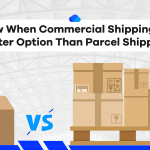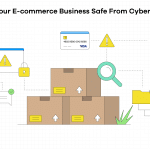
According to a Washington Post article, the cost of shipping a container from China to the US West Coast has risen by more than 156% in the past year.
This has led nearly all of the world’s leading international shipping lines to increase rates and impose port congestion/value-added surcharges, some as high as $5,000.
This is yet another way the COVID-19 pandemic continues to turn the retail landscape on its head.
The resulting fulfillment delays, supply chain disruptions, and additional costs can pose a major problem for e-commerce sellers caught unprepared.
No matter the size or nature of your online sales business, you need to understand the challenges facing international shipping and be prepared to assess their impact on your supply chain, logistics, and profit margins—now and in the future.
Multiple Factors Are Stifling International Freight
The economic impacts of the COVID-19 pandemic continue to hit international shipping lanes hard.
A perfect storm continues to swirl over the industry, negatively affecting supply chains and the costs of goods worldwide.
A Pandemic Import Boom
As the COVID-19 pandemic led to an increasing number of people staying (and working from) home, online retail surged. This spike in purchasing led to increased demand for heavily imported products.
China, in particular, saw huge spikes in exports of PPE, consumer electronics, bicycles, furniture, clothing, and other goods relevant to a shift to both play- and work-from-home living.
In turn, this unexpected surge has quickly overwhelmed the international trade infrastructure in a way that it has yet to fully recover from.
Port Congestion
As more and more cargo containers arrive stateside from China and other international points of origin, dock space has become extremely limited.
This has forced scores of fully loaded cargo ships to sit anchored outside some of the nation’s largest ports.
Container Supply Issues
In many cases, finding a shipping container to fill is a challenge in itself.
Due to pandemic trade restrictions and imbalances, containers that have been emptied stateside have sat unfilled and cannot be returned to their ports of origin.
Even bolstered production of new containers has not remedied the issue. Demand and costs for available containers continue to rise.
Projections suggest that container supply will remain an issue into next year. The fewer containers there are, the slower goods will flow through international shipping channels.
Supply Chain Stress
All of these factors amplify production, labor, and supply shortages that are hampering supply chains across a wide swath of industries.
Outbreaks, port closures, container shortages, and increased competition for materials and components drive up costs and fulfillment times.
Considering the complex and multifaceted nature of this container shipping issue, it is unlikely to resolve itself soon.
As such, you must proactively assess its impact on your business and the retail landscape.

Container Shipping Bottlenecks Stoking Inflation Fears and Price Increases for Businesses and Consumers
While the economic recovery is giving customers increased buying power and purchasing intent, prices are going up, and inflation is becoming a real concern.
The increased cost of importing goods and components from overseas is the center of it all.
Just as profit margins are tightening for port operators, they will likely continue to be squeezed through the supply chain to retailers.
This will have serious implications for how you will have to plan for your inventory needs, as well as how you price your listings.
There are several ways you may want to attempt to mitigate the negative impacts of the current container shipping delays now and going forward:
Consider Increasing Your Inventory on Hand
While storing too much inventory in your warehouse typically has negative costs, these may be lessened or nullified if obtaining a regular stream of inventory becomes too challenging and/or costly.
In the short term, you may find that it is more cost-efficient to acquire supplies when you can rather than be forced to pay increased fees and surcharges for multiple, smaller orders.
Adjust Your Predictive Purchasing Thresholds
Sellercloud allows users to avoid costly out-of-stocks and overselling merchandise with our low-stock alert and predictive purchasing features.
That said, the turnaround time and reorder costs may not be the same as when you last set your inventory level thresholds.
Pay Attention to the Calendar
There is a risk that shortages caused by the back-to-school and holiday seasons may put an additional short-term strain on your ability to keep enough stock on hand to fulfill orders.
If these are particularly important sales stretches for your e-commerce business, you may need to order more and sooner than usual to avoid fulfillment bottlenecks.
Increase Catalog Prices as Needed
There is no shame in passing on your increased landed costs to your customers. In most cases, increasing prices to protect your margins is simply good business.
Monitor Your Cost of Goods Sold (COGS) Metrics to Assess Container Shipping Bottlenecks on Your Bottom Line
Whether you rely on imported goods, packaging, or parts for your e-commerce business directly or indirectly, the ongoing container shipping crisis will likely impact your cost of doing business.
The key is knowing how much of an impact these trade challenges have on your bottom line. After all, how can you make profit-based decisions without the actual data to back them up?
Sellercloud’s container workflow features will help you optimize container imports and exports. Our tools allow you to fill, receive, and track container-based purchase orders.
Profit and Loss (P&L) can be tracked on both an order-by-order and product-by-product basis.
This allows you to monitor your profit margins, dial in your prices to target your ideal profit margins and account for logistical fluctuations, such as the current container shipping struggles.
Furthermore, our cost of goods sold (COGS) and inventory value reporting features allow you to access up-to-date data on the landed costs for every item you sell and wherever you sell it.
For example, monitoring fluctuations in average cost can help surface how factors like increased freight and shipping rates affect your COGS.
In particular, our weighted average cost calculations allow you to calculate your average costs in relation to your inventory quantities.
To determine this figure, the total cost of your current stock for a particular product is divided by the number of units you hold.
This quantity consideration allows weighted average cost data beyond simple average cost figures to provide a more complete picture of your current inventory value.
Ultimately, COGS figures like these will help adjust catalog and wholesale prices for customers and assess the cost-effectiveness of your supply chain partners.
Omnichannel e-commerce is full of challenges, but having the right tools can help you make the best adjustments and decisions regardless of the current retail climate.
Contact us directly for a free demo of our platform’s robust features and integrations. We will provide the support you need to grow your online sales even in uncertain times.




